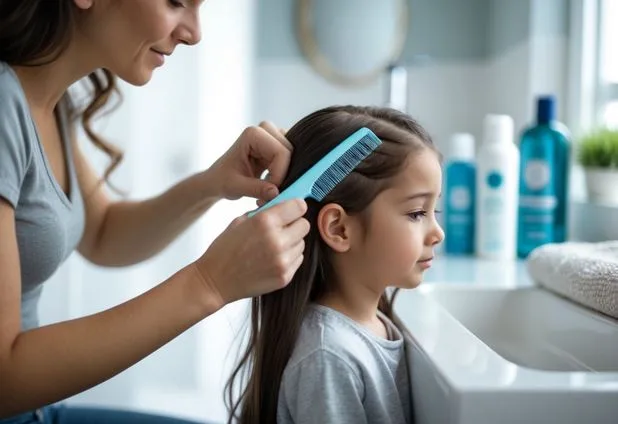A Parent’s Guide: How to Choose the Right Lice Product for Your Child’s Hair Type
You’ve gotten the dreaded call from the school nurse or found the tell-tale signs yourself. Your child has head lice. After the initial wave of panic subsides, you head to the pharmacy, where you’re faced with a dizzying array of shampoos, mousses, and sprays, all promising to solve your problem. The reality, as many frustrated parents know, is that not all treatments work for everyone, and a big part of the challenge is your child’s specific hair type.
The frustration of a failed treatment is real, and it’s why many families are turning away from the trial-and-error of store-bought shampoos and looking for guaranteed solutions. A professional clinic that uses a variety of lice treatment products and techniques can tailor their approach to your family’s specific needs, ensuring a successful outcome regardless of hair type. But if you’re navigating the options yourself, here’s what to consider for a more effective treatment.
The Universal Truth: It All Comes Down to the Comb-Out
Before we get into specific hair types, let’s start with a foundational truth: no product is a magic bullet. Every single lice treatment, whether it’s an over-the-counter shampoo or a professional application, must be followed by a meticulous and thorough comb-out with a high-quality metal nit comb. This is the crucial, non-negotiable step that removes the eggs (nits), which are glued to the hair shaft and are often resistant to chemical treatments. The product kills the bugs; the comb removes the next generation. A successful treatment is impossible without this detailed manual removal, a process that can take a significant amount of time and patience.
The Challenge of Long, Thick, or Curly Hair
This is, without a doubt, the most challenging hair type for an at-home lice treatment. The sheer volume of hair makes every step of the process more difficult, time-consuming, and stressful for both parent and child.
- The Problem: The primary challenge is achieving full saturation. You need to ensure that every single strand of hair, from root to tip, is completely coated in the treatment product. This can be incredibly difficult to do in a dense head of hair, and any missed spots are a potential point of reinfestation. The subsequent comb-out can be a multi-hour, tear-filled ordeal, often leading to frustration and missed nits.
- What to Look For: If you’re attempting a DIY treatment, look for products with a thin, liquid consistency, which can be easier to work through dense hair than a thick mousse. Products that contain conditioning agents or detanglers can also make the combing process slightly less of a battle. For many parents in this situation, this is the point where the time and stress saved by a professional, one-and-done treatment becomes the most valuable option.
Navigating Fine or Thin Hair
While you might think fine hair would be easier, it comes with its own unique set of challenges. The lack of volume means there’s nowhere for nits to hide, but it can also make them harder to spot and remove.
- The Problem: Nits can be incredibly difficult to see on fine, light-colored hair, as they can blend in seamlessly. The hair shafts themselves are also more delicate and can be prone to breakage from the aggressive, repetitive combing required to remove every nit. It’s easy to be too rough in an attempt to be thorough.
- What to Look For: A product with good conditioning properties is a must. You want something that will provide “slip” to the hair, allowing the metal nit comb to glide through more easily with less pulling and potential for damage. Using a good detangling spray before you begin the combing process can also be incredibly helpful.
Caring for Color-Treated or Processed Hair
For teens or adults with color-treated, bleached, or chemically processed hair, the primary concern is avoiding further damage to hair that is already in a delicate state.
- The Problem: Harsh, pesticide-based treatments can potentially strip hair color, cause fading, or further dry out already-processed strands, leading to a brittle texture and breakage.
- What to Look For: This is a great time to look for pesticide-free treatment options. Many modern treatments use ingredients like dimethicone, a silicone-based polymer that works by suffocating the lice rather than poisoning them. These are generally much gentler on the hair shaft and won’t interfere with your hair color. It’s always a good idea to do a small “strand test” on a hidden section of hair first to see how it reacts before applying the product to your entire head.
Choosing the right lice treatment is about considering both the pest and the person. By taking your child’s hair type into account, you can choose a path that is more effective and less stressful for everyone involved.


